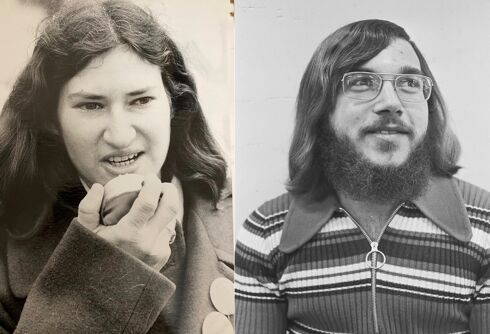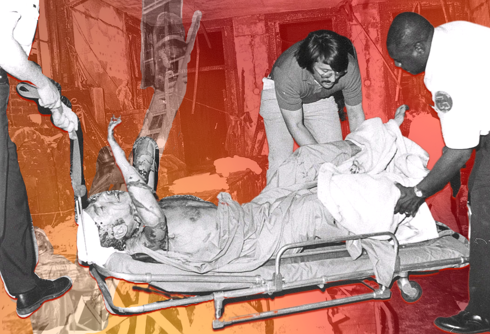The new book LOVING: A Photographic History of Men in Love portrays romantic love between men in hundreds of moving photographs taken between the 1850s and 1950s. Now, the authors are sharing some of the never-before-published photos exclusively with LGBTQ Nation this month along with their thoughts and the backstory behind each photo.
Taken when male partnerships were often illegal, the photos are from the collection of a married couple, Hugh Nini and Neal Treadwell, who over the past 20 years have meticulously accumulated over 2,800 snapshots, portraits, and group photos.
Related: Voting deadlines, registration & what’s at stake for LGBTQ voters in 2020
The couple found them at flea markets, in shoe boxes, estate sales, family archives, old suitcases, and online auctions. Their collection now includes photos from all over the world.
Never Miss a Beat
Subscribe to our newsletter to stay ahead of the latest LGBTQ+ political news and insights.
The technology used consists of ambrotypes, daguerreotypes, glass negatives, tintypes, cabinet cards, photo postcards, photo strips, photomatics, and snapshots – over one hundred years of social history that reflect changing fashion, hairstyles, and societal norms, as well as the development of photography.
The men in LOVING shared a common desire to be seen and memorialize their stories despite the risks. Each image is an open demonstration of love, affection, and also bravery. The message here is as old as time, but from an unexpected, and heretofore silent, source.
Challenging boundaries, universal in reach, and overwhelming in impact, the photos speak to our spirit and resilience, our capacity for bliss, and our longing for the shared truths of love. It moves the conversation beyond old stereotypes and shifts the narrative to where it should have been all along: two people in love can be any two people, regardless of gender, orientation, or any other human-created divide.

Ambrotype
Circa 1850
82 x 71 mm
Provenance: US
Hugh and Neal: This is the oldest photo in our collection. It, possibly, dates somewhere in the 1840s. It is an ambrotype, which means that the image is printed on a glass plate.
This couple’s unkempt hairstyles stand in contrast to their relatively fashionable clothing. Like most images from this era, their expressions are, well, expressionless. But there are three points of contact that, for us, place it in the category of loving male couples.
There is the shoulder embrace and the thigh crossed over the thigh of the man on the left. And the last point of contact is the man on the left placing his hand on the thigh of his boyfriend.















